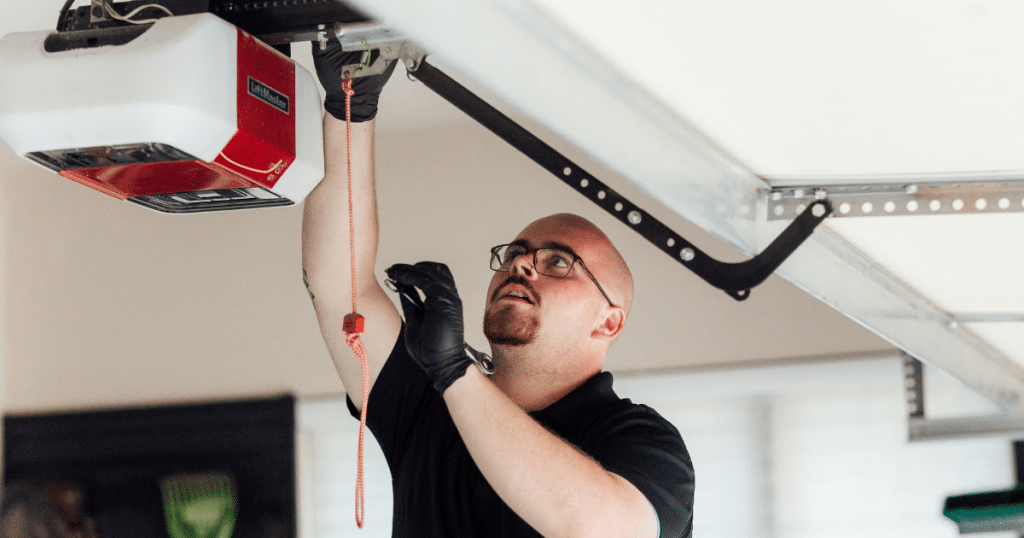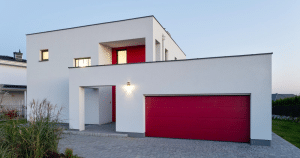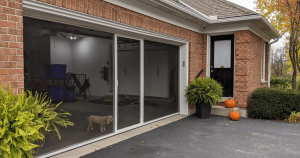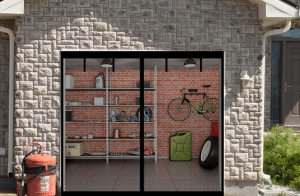If your garage door is no longer functioning properly, learning how to reengage the garage door is a must. This common issue can occur due to power outages, manual disengagement, or mechanical failures, leaving your garage door stuck or off-track. Understanding the proper steps to reengage your door can help prevent further damage and restore its functionality quickly.
In this guide, we will walk you through how to safely and effectively reengage your garage door, whether it’s from a simple manual disconnect or due to a power failure. These easy-to-follow steps will help you get your garage door working smoothly again, ensuring your home remains secure and your door operates as it should.
Understanding Garage Door Mechanisms
Garage doors operate through a complex system of components, including the opener, trolley, springs, and sensors. When you press the button on your remote or use the wall-mounted control, the garage door opener activates and then moves the door. The trolley, connected to the opener, moves along the track, lifting and lowering the door. Springs balance the door’s weight, while sensors detect any obstacles in the door’s path, ensuring safe operation.
Regular maintenance is essential for preventing disengagement issues. By inspecting and maintaining the opener, trolley, springs, and sensors, you can avoid potential problems before they arise. Proper maintenance can also help extend the lifespan of your garage door, saving you money in the long run.
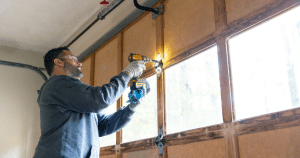
Step-by-Step Guide on How to Reengage Your Garage Door
If your garage door is disengaged, learning how to reengage the garage door is essential to restore its function. Follow these steps to reconnect it and keep your door working smoothly and safely.
Step 1: Disconnect the Garage Door from the Opener
Find the red emergency release cord on the opener. Gently pull it to disconnect the door from the opener, especially after a power outage or for maintenance. Be careful not to damage the mechanism.
Step 2: Checking the Track and Trolley
Inspect the track for debris or misalignment. Make sure the trolley is aligned correctly and moves smoothly. Even small obstructions can affect the door’s operation.
Step 3: Reengaging the Garage Door
Manually lift the door and make sure it lines up with the tracks. Pull the emergency release cord towards the opener to reattach the door. Ensure the trolley locks are in place for smooth operation.
Step 4: Testing the Reengaged Door
Try operating the door with the opener or wall control to see if it works properly. The door should open and close smoothly. Check the alignment again or consult a professional if it’s not working properly.
Following these steps, you can quickly reengage your garage door and prevent further issues. If the door keeps malfunctioning, you might need to call a professional for help.
Common Issues When Reengaging Garage Doors
Reengaging your garage door is typically straightforward, but problems can sometimes arise. Here’s a comparison table of common issues and how to fix them.
| Issue | Fix |
| Misaligned Sensors | Make sure the sensors face each other and are clear of blockages. Realign them if needed. |
| Broken Springs | Check the springs for damage and replace any that are broken. |
| Malfunctioning Remote Controls | Replace the battery or reprogram the remote to sync with the opener. |
| Obstructions in the Path | Remove debris or objects from the door’s tracks to keep it running smoothly. |
If these fixes don’t resolve the issue, consulting a professional is best. They can figure out the problem and garage door repair the garage door.
Maintenance Tips to Prevent Future Disengagement
Regular maintenance is key to avoiding future disengagement issues. Here are some essential steps to keep your garage door functioning smoothly and prevent problems like disengagement.
1. Lubricate Tracks and Springs
Lubricate the tracks and springs regularly to keep friction low. This keeps the door moving smoothly and prevents wear that could lead to disengagement.
2. Inspect Sensors, Tracks, and Springs
Inspect the sensors, tracks, and springs for any damage or misalignment. Regular inspection can help catch problems early before they cause the door to disengage.
3. Replace Remote Control Batteries
Replace the batteries in your remote control periodically. Weak batteries can lead to communication issues, causing the door to not reengage properly.
4. Test Door Alignment
Ensure the door is properly aligned. Misalignment can cause stress on components, increasing the risk of disengagement.
Following these maintenance tips will teach you how to reengage garage door issues before they become a problem. Regular care will extend your door’s lifespan and keep it running smoothly.
Signs Your Garage Door Needs Immediate Reengagement
If your garage door isn’t working properly, it may need immediate reengagement. Here are some signs to look out for that indicate your door is disengaged and needs attention.
| Sign | Description | Action to Take |
| Partial Opening or Closing | The door stops before fully opening or closing, leaving it halfway open. | Check for disengagement and reengage the door manually. |
| Loud Noises or Jerking Movements | Grinding, popping, or jerking sounds may mean misalignment the trolley and opener. | Realign the trolley and opener to restore smooth operation. |
| Unresponsive to the Opener | The door doesn’t respond to the opener, requiring manual reengagement. | Manually reengage the door or inspect for a faulty release mechanism. |
These signs point to the need for immediate action to restore your door’s function. Understanding how to reengage garage door components quickly can help avoid more serious issues.
How Weather Conditions Affect Garage Door Engagement
Garage doors can be affected by weather conditions, especially during extreme temperatures. Cold weather, for example, can cause the springs and sensors to stiffen, leading to disengagement or slow operation. If the door is sluggish or unresponsive during colder months, it may be a sign that the components are frozen or stiff.
Too much humidity can lead to rust forming on the garage door’s tracks and parts. Rust can create friction and make it harder for the door to move smoothly, leading to disengagement issues. Likewise, extreme heat can make the tracks expand, causing the door to misalign and creating issues with engagement.
How Sensors Help Your Garage Door Work Properly
Sensors are crucial for ensuring your garage door works safely. If they are not working properly, the door may not function correctly. Here’s how sensors affect your door and how to maintain them.
Obstacle Detection
Sensors make sure the door doesn’t close on objects, pets, or people. For safety, they make the door stop or reverse when they detect objects in its way.
Sensor Misalignment
If the sensors are out of alignment, the door might not work properly or could unexpectedly reverse. Regularly check alignment and clean them for smooth, reliable operation.
Cleaning and Aligning Sensors
Clean the sensor lenses regularly and ensure they are parallel. Adjust misaligned sensors gently to restore proper alignment and function.
Sensor Replacement or Calibration
If cleaning and alignment don’t resolve the issue, recalibrate or replace the sensors to ensure safe, reliable garage door operation.
Proper maintenance of your sensors is crucial to prevent disengagement issues. Knowing how to reengage garage door components can help you keep everything running smoothly.
Upgrading Your Garage Door Opener for Better Performance
If your garage door opener is outdated or malfunctioning, upgrading to a new model can greatly improve its performance. Here’s what to consider when making the upgrade.
- Improved Technology: Modern openers offer smartphone Wi-Fi control, better sensors, and quieter operation for a smoother, more reliable experience.
- Belt-Drive vs. Chain-Drive Systems: Belt-drive openers are quieter and work well for homes with rooms above the garage, while chain-drive openers are sturdier and better suited for larger, heavier doors.
Upgrading your opener makes your garage door system work more reliably and efficiently. Knowing how to reengage garage door components is also important for smooth, long-term performance.

FAQs About How to Reengage the Garage Door
Can I fix a garage door opener if the power goes out?
Yes, you can manually reengage the door even if the power is out. Simply disconnect the door from the opener, align it properly, and reconnect the emergency release cord.
How can I tell if my garage door opener is not working?
If your new garage door doesn’t respond to the opener, makes loud noises, or struggles to move, it could indicate a problem with the opener. If these issues continue, it’s a good idea to call a professional for help.
What can I do if my garage door gets stuck halfway?
If your door is stuck halfway, check the tracks for obstructions and ensure the trolley and sensors are aligned. If the problem continues, try reengaging the door manually or contact a professional for assistance.
How often do I need to get my garage door checked?
It’s a good idea to have your garage door checked once a year to make sure everything is working properly. Regular maintenance can help prevent problems and extend the lifespan of your door.
What’s the difference between manual and automatic reengagement?
Manual reengagement means lifting the door yourself and locking the trolley back in place. Automatic reengagement happens when the opener activates the door after you pull the emergency release cord.
Conclusion
Knowing how to reengage the garage door is essential for homeowners who want to maintain their door’s functionality and avoid costly repairs. Regular maintenance, such as lubricating the tracks and checking the sensors, can help prevent disengagement issues before they occur. If you encounter problems, take the necessary steps to reengage the door or seek professional help manually.
By following the steps in this guide and staying proactive about maintenance, you can ensure that your garage door continues to serve you reliably for years. If you need expert assistance, consider contacting CCM Overhead Doors, your trusted garage door repair service in Oklahoma City. Their experienced team can help with reengagement issues and keep your door in top condition.
End Note
If you need a trusted company for your garage door needs, CCM Overhead Doors is here to help. We offer top-quality openers that work smoothly and last long, ensuring your home remains safe and secure. Our team is here to help, whether you need a new opener, repairs, or upgrades.
Explore our services, including garage door opener repair, garage door repairs, and various garage door openers. We also provide residential and commercial garage door openers and dock levelers for your business. Don’t forget about our maintenance services to keep your door working smoothly.
Check our service areas to see if we’re near you and learn more about our company on our About Us page. You can also browse our reviews, photo gallery, and video gallery to see our work. Stay connected with us on YouTube, Facebook, and Instagram for more insights, and check out our Blog for helpful tips and updates. For more details, visit our Contact Us page.

